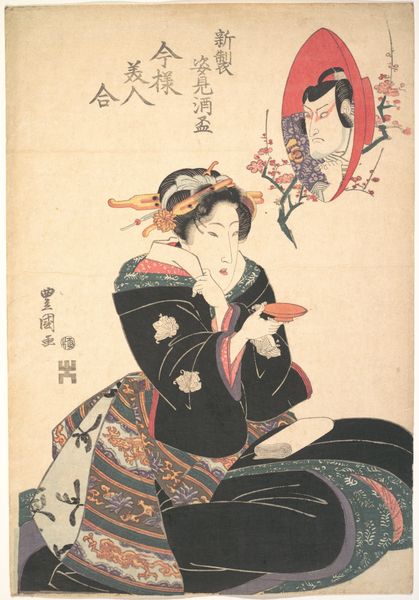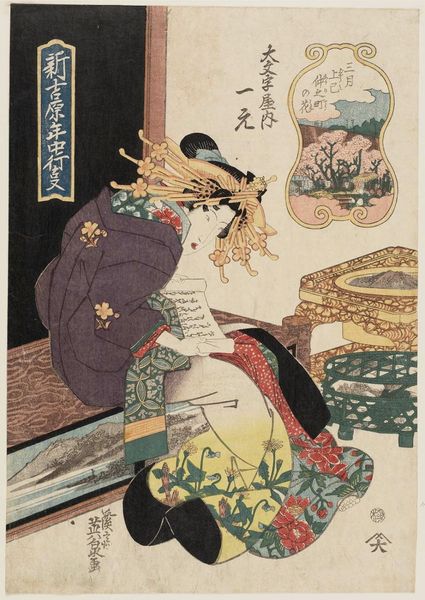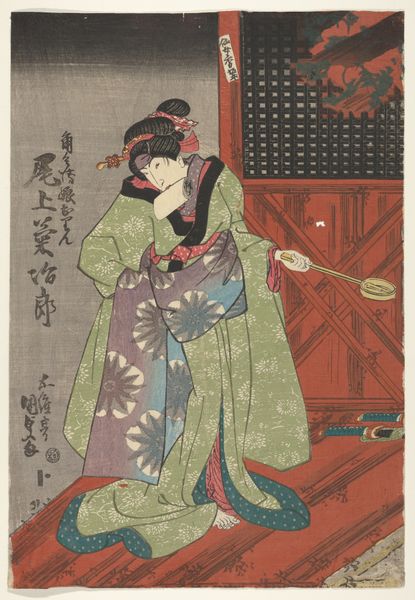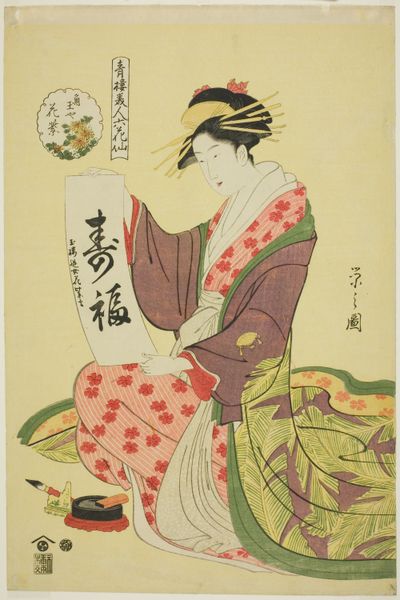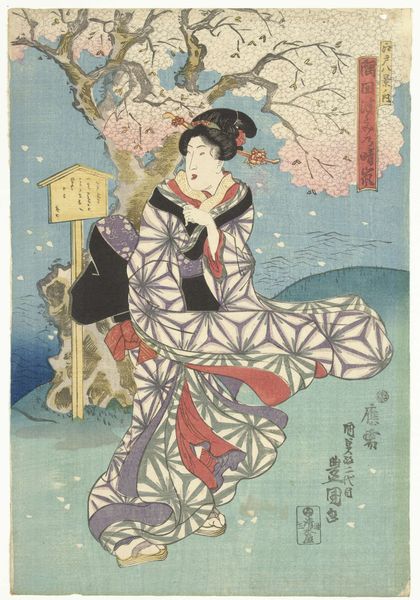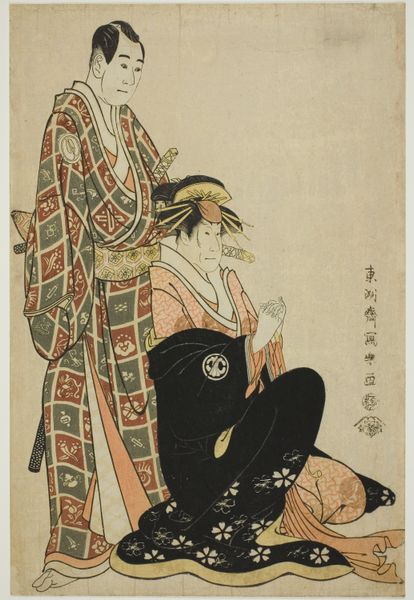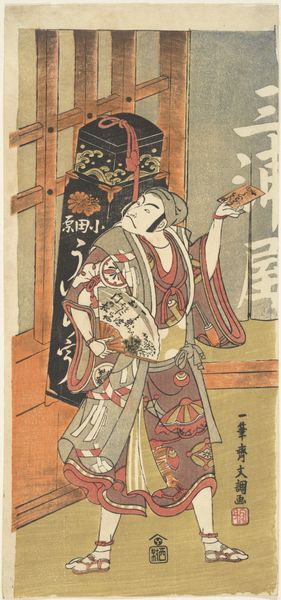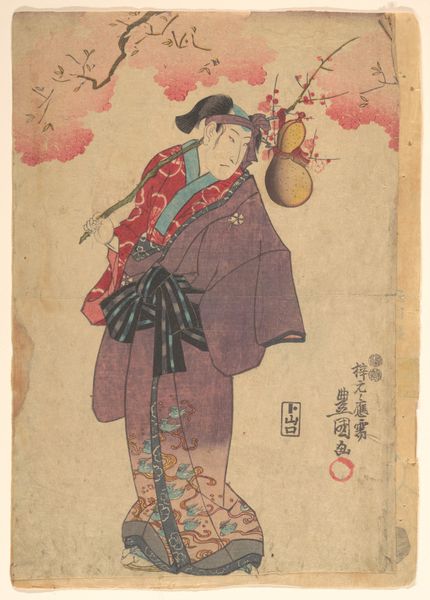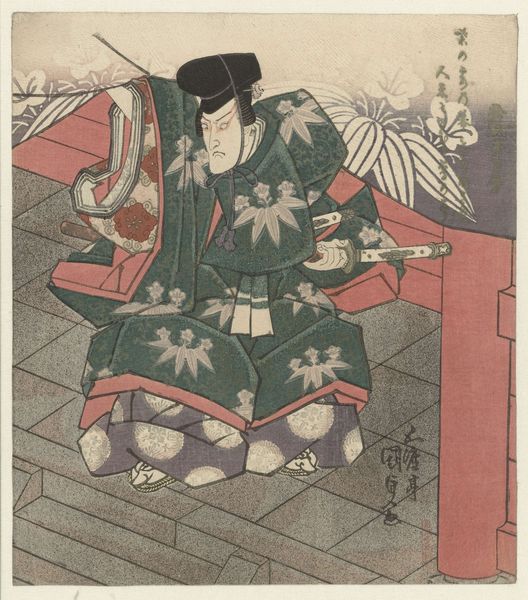
print, woodblock-print
#
portrait
# print
#
asian-art
#
ukiyo-e
#
woodblock-print
#
genre-painting
Dimensions: Image: 13 5/8 × 9 5/8 in. (34.6 × 24.4 cm)
Copyright: Public Domain
Curator: Looking at this woodblock print from between 1800 and 1865, titled "Print" by Utagawa Kunisada, currently residing here at the Metropolitan Museum of Art, I'm struck by how skillfully the artist manipulated line and color to convey narrative depth. Editor: The first thing that leaps out is the somber, almost melancholic mood. The palette is quite subdued, lending it a feeling of quiet contemplation. And she seems to be in an intimate domestic scene, wouldn’t you say? Curator: Precisely. This print offers insight into the material conditions of artistic production in Edo-period Japan. Ukiyo-e prints like these were made through a collaborative process involving the artist, the block cutter, and the printer. We see not only Kunisada's artistic vision but also the labor involved in bringing that vision to fruition. Each stage requiring unique sets of tools, and different specialist practices. Editor: Absolutely, and on the symbolic level, this is fascinating. Her pose, adjusting her hair, feels laden with ritual and hidden meaning. Her expression suggests she might be enacting an established theatrical role from one of the famous Kabuki performances, or even perhaps something we recognize as female beauty standards in Japanese culture. Do you see the weight these items have, historically? Curator: The woodblock as medium allowed mass production. These artworks existed for commerce, designed to appeal to emerging middle class; its popularity influencing aesthetic values surrounding fashion, home decor, the representation of popular actresses etc. But beyond this the production line shaped the aesthetic—there’s a democratisation of aesthetics here which we must also value. Editor: Indeed! Consider the floral motifs and the intricate designs on the woman’s kimono and tools laid out across from her in a square shape. I’d even say the pampas grass hints towards seasonal transitions, possibly alluding to cycles of life and perhaps the transient beauty that became iconic within that period in Japanese culture, wouldn't you agree? Curator: Agreed, and considering the materials -- the specific papers and pigments used -- Utagawa was deeply conscious of production as essential, more so than the romantic idea of artistry that had occurred pre-industrial. The consumption became key. Editor: Studying these images makes me wonder how far removed our current visual culture really is from these timeless forms. Curator: Thinking about Utagawa and his techniques, I'm reminded that art and visuality have long been tethered to labor. These ideas, combined, are extremely telling.
Comments
No comments
Be the first to comment and join the conversation on the ultimate creative platform.
